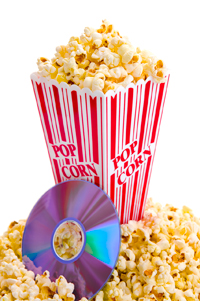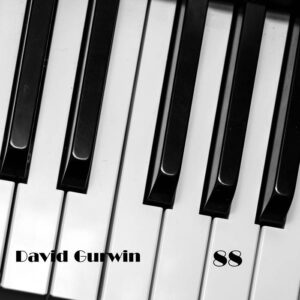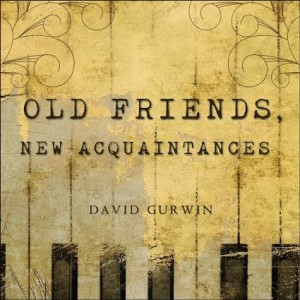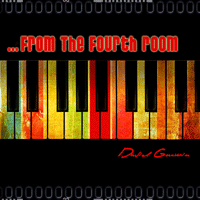Entertainment & Media, Law, Technology
 First Netflix announced a new pricing model last year where subscribers would be charged separately for access to streaming service and for rental of DVDs/Blu-Rays instead of the single charge for both that had been in place. The total charge, of course, was more than the single charge that had been paid for both services.
First Netflix announced a new pricing model last year where subscribers would be charged separately for access to streaming service and for rental of DVDs/Blu-Rays instead of the single charge for both that had been in place. The total charge, of course, was more than the single charge that had been paid for both services.
Despite the consumer backlash to the announced changes, Netflix still moved forward with its new pricing policy. As might have been expected, many Netflix customers became former Netflix customers (or chose to subscribe to only one of the two offerings). I can understand that Netflix is looking for new ways to generate income as competition heats up in the always competitive market for home entertainment dollars. However, you would have thought that they would have done their homework a little more diligently in assessing the likely marketplace reaction (and the resulting loss of customers and drop in stock price) before enacting the new pricing plan. It kind of reminds me of Coca-Cola’s decision to dump the old formula for New Coke without gauging how Coke drinkers would react, only to have to backtrack later.
On the heels of that pricing controversy
Netflix then decided to partner with Facebook to show its customers’ viewing histories on Facebook, presumably to data mine the value from that demographic and behavioral information. By aggregating the information collected by both on a Facebook user, Facebook and Netflix could paint a pretty accurate picture of a user’s anticipated buying behaviors and otherwise generate a fairly detailed personal profile. This allows Facebook and Netflix (and any third parties with whom they could share that information) to pinpoint marketing to those users. While some may view this ability to be targeted to one’s specific interests and activities as a real convenience, I (and I suspect a lot of other folks) see this as yet another erosion of our personal privacy.
Some history is in order.
The U.S. Senate, after heavy lobbying from Facebook and Netlflix, tinkered with the Video Privacy Protection Act (“VPPA”), a law originally enacted in 1988 after the video rental history of failed U.S. Supreme Court nominee, Robert Bork, was published by the Washington City Paper during his Supreme Court confirmation hearings. The VPPA, as originally enacted, outlawed the disclosure of video rentals unless the consumer gave consent, on a rental-by-rental basis. Previously, the law prohibited Netflix customers from allowing their Facebook streams to automatically update with information about the movies they were viewing, though Spotify and other online music-streaming customers could consent to the automatic publication on Facebook of the songs to which they’re listening. Facebook and Netflix both lobbied Congress hard to amend the VPPA to put it on an even footing with these music services. Late last year, the U.S. House of Representatives passed the Video Privacy Protection Act Amendments Act of 2012 and President Obama signed it into law. As a result, Netflix and Facebook now can automatically update a user’s timeline with a list of whatever they’re watching on Netflix.
So what’s the big deal?
Netflix says that you can “opt out” of this for each movie or show you rent, but how many people are going to remember to do this on a title by title basis or even once? It is bad enough when Facebook keeps eroding our privacy. However, it is a “free” service and allowing Facebook to monetize the data it gathers is part of the price you pay to use it. However, Netflix is a pay service. While the same people who enjoy keeping all of their “friends” up to date as to their current location, activities and meals might enjoy sharing this information with the world, I think that there are plenty of people who will not see it that way and Netflix can expect to receive some less than happy reaction from at least a portion of their subscriber base.

Entertainment & Media, Law, Music, Technology
 A recent episode of the Fox television hit, Glee, featured the cast performing a cover of Sir Mix-A-Lot’s 1990’s hit, “Baby Got Back.” Almost immediately after it aired, legions of “Gleeks” accurately pointed out that the new version of the song was a nearly identical arrangement that had been released by Jonathan Coulton in 2005. Coulton has claimed that the show’s producers did not seek, nor were they granted, permission to reproduce his arrangement on the show. Having not seen the episode myself, I decided to put my musical training to good use (something that comes in very handy in my practice as an entertainment lawyer) and I compared the two versions. Yep, nearly a note-for-note copy of the Coulton arrangement.
A recent episode of the Fox television hit, Glee, featured the cast performing a cover of Sir Mix-A-Lot’s 1990’s hit, “Baby Got Back.” Almost immediately after it aired, legions of “Gleeks” accurately pointed out that the new version of the song was a nearly identical arrangement that had been released by Jonathan Coulton in 2005. Coulton has claimed that the show’s producers did not seek, nor were they granted, permission to reproduce his arrangement on the show. Having not seen the episode myself, I decided to put my musical training to good use (something that comes in very handy in my practice as an entertainment lawyer) and I compared the two versions. Yep, nearly a note-for-note copy of the Coulton arrangement.
Predictably, the Internet lit up with posts by folks offering their “legal analysis” of this situation. As with much on the Internet, this is another situation of “don’t believe everything you read simply because it is on the Internet.” Much of the discussion fails to address certain fundamental issues of copyright law and, even if discussed, many of the blog postings and articles that do address it are simply incorrect in their analysis.
Under copyright law, the owner of a copyright (in this case the copyright to a musical composition) owns a bundle of rights. Included in that bundle is the right to create “derivative works” based upon that work. The Copyright Act defines a “derivative work” as “a work based upon one or more preexisting works, such as a translation, musical arrangement, dramatization, fictionalization, motion picture version, sound recording, art reproduction, abridgment, condensation, or any other form in which a work may be recast, transformed, or adapted.” An arrangement of a musical composition is a typical example of a derivative work.
It is reported that Jonathan Coulton properly obtained a license from the music publisher that owned the copyright to “Baby Got Back” to legally prepare his new version (i.e., his derivative work) of the song. That cover version became popular as well.
The current issue is whether Glee’s recent version (which is nearly identical to 2005 Coulton’s version) is an unlawful reproduction or derivative work of that version or, on the other hand, falls under the category of “fair use.” This legal issue should not be confused with the “what is right” issue as to whether or not the producers should have sought Mr. Coulton’s permission.
There have been statements made in various publications indicating that since Mr. Coulton’s version was not the original version, anyone legally may use his version. A derivative work absolutely is entitled to copyright protection in its own right. In the case of a cover version done pursuant to the Copyright Act’s compulsory license provisions, it is true that the cover version normally is not subject to protection as a derivative work–unless the copyright owner of the original agrees to allow the creator of the cover to own a derivative work. Most cover licenses are not obtained via the compulsory license. Instead, most are obtained by getting a voluntary license, either directly from the music publisher or, more commonly, from the licensing clearinghouse The Harry Fox Agency. Those voluntary licenses may grant the derivative work rights to the cover creator. So, let’s assume, for the sake of argument, that Coulton’s version is subject to its own copyright protection.
Assuming that the cover is subject to its own copyright as a derivative work, what IS causing confusion here, is whether or not the Copyright Act’s fair use doctrine should apply. Along with the notion that a copyright owner has the right to control the creation of derivative works is the often misunderstood (and equally vague) concept of “fair use.” Fair use is a defense to copyright infringement for actions which, but for the applicability of the defense, would amount to an act of infringement.
Section 107 of the Copyright Act sets forth a non-exhaustive list of four elements that the courts must consider in determining if any unauthorized use of a copyrighted work is a “fair use.” They are: (1) the purpose and character of the work (which is claimed to be a fair use); (2) the nature of the copyrighted work; (3) the amount and substantiality of the portion used in relation to the copyrighted work as a whole; and (4) the effect of the use upon the potential market for or value of the copyrighted work.
While the statute does not list it as a factor that must be considered, as a result of an interesting 1994 U.S. Supreme Court decision in the case of Campbell v. Acuff-Rose Music (a case involving rapper Luther Campbell’s unauthorized cover version of Roy Orbison’s classic song, Oh, Pretty Woman), the courts have established another element to be considered: whether or not the unauthorized use is a “transformative use.” While some consider this to be a new “fifth element” to be considered, most legal scholars consider the “transformative work” test to be an element to be considered as part of the analysis of the first of the four statutory factors, i.e., the purpose and character of the work.
The Campbell Court stated that a derivative work becomes a “transformative work” (and, thus, entitled to fair use treatment) if it uses a source work in a completely new or unexpected way. In other words, even though the statute says that a copyright owner may stop others from preparing derivative works based on their copyrighted work, if that new work is “transformative” enough, the copyright owner may not be able to stop the use, even if the other four fair use factors set forth in the statute weigh against a finding of fair use. One thing that has led to quite a bit of confusion over the years is that the definition of a “derivative work” includes a work that is “transformed.”
Confused yet? From the variety of commentators on this point, it is clear that there is little consensus on how to apply this in the real world. Because reasonable people can disagree as to whether or not any given use is a fair use (including whether a transformed work has been sufficiently transformed as to amount to a fair use), many record producers and recording artists will seek to obtain licenses to create these new versions as a sort of “insurance policy” against a lawsuit alleging infringement. Nonetheless, others are willing to roll the dice that the use is sufficiently transformative to qualify as fair use.
So, what about the current situation with Glee? Assuming that Mr. Coulton did obtain a right to create and record a derivative work of the original Sir Mix-A-Lot composition (this right is called a “mechanical license” when used for audio-only versions and is called a “synchronization license” when used for audio-visual versions), he has nothing to worry about. In fact, depending on the terms of his license with the original copyright holders, he may even own a separate copyright in the changes he made to the original composition. By taking his derivative work and merely reproducing it, the producers of Glee likely have infringed the copyrights in that derivative work, unless they can argue that their use is “fair use.” While reasonable people can, and do, disagree as to whether any use is sufficiently transformative in order to amount to a fair use, clearly, there has been no transformation of the Coulton version to the Glee version. Thus, their case will have to live or die on the analysis of the other four fair use factors.
Personally, I can’t see how a nearly note-for-note copy (while perhaps an homage, of sorts) is a parody or other type of fair use.
 First Netflix announced a new pricing model last year where subscribers would be charged separately for access to streaming service and for rental of DVDs/Blu-Rays instead of the single charge for both that had been in place. The total charge, of course, was more than the single charge that had been paid for both services.
First Netflix announced a new pricing model last year where subscribers would be charged separately for access to streaming service and for rental of DVDs/Blu-Rays instead of the single charge for both that had been in place. The total charge, of course, was more than the single charge that had been paid for both services.



